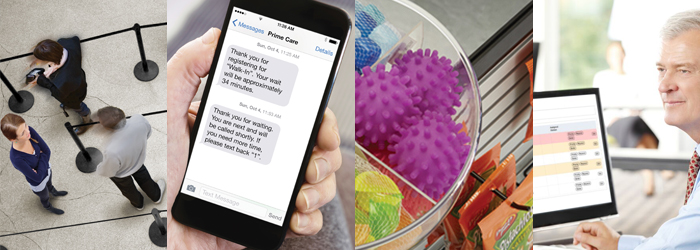
Para un mejor flujo de multitudes, piense como si fuera la primera vez
People travel in and out of transportation facilities day in and day out, around the clock. For some, the act is an old hat. For newbies, entering an unfamiliar airport, subway, bus terminal, or train station for the first time can be beyond daunting. There are so many areas where the flow of crowds can get “caught up.” The culprits behind these hiccups in crowd flow: People who don’t know where to go, where to stand, where to line up, you get the idea. Simply thinking like a first-time passenger in every aisle, station, line, waiting area, entrance, exit, and beyond can avoid these snafus in traffic flow so that all passengers – veterans and neophytes alike – can get where they need to go in a reasonable amount of time with as few obstacles as possible.
Make the clue to queue clear.
Brief but specific instructions such as “Enter Here for Ticketing” or “Line Forms Here” can eliminate bottlenecks and keep people moving. And don’t neglect the end of the line – placing “Wait Here” signage at the end of the line prevents people from crowding up behind each other as they wait for their transaction to begin.
Use post-top signage.
Post-top signage that displays written instructions and/or easily recognizable iconography can direct travelers while they’re in the queue, guide them as they make their way throughout a transportation hub, and let them know when they’ve reached their destination. Post-top signage can reinforce the message being sent by stanchions used to cordon off an area or form a queue.
Use wayfinding signage.
Signage like “Baggage Claim ” – repeated multiple times throughout a facility – will clearly convey a wayfinding message and keep traffic moving confidently in the right direction. Traditional sign stands also make for easy deployment in an emergency and are helpful in redirecting traffic in case of a closed terminal or cancelled flight, for example. When there’s no room for wayfinding errors, post and panel barriers printed with your message offers a large, colorful way to grab a traveler’s attention and keep people moving in the right direction.
Use electronic queuing and station lights to call forward the right people to the right line.
Travelers are easily distracted as they work to keep track of their entire party, their baggage, and the time. Electronic queuing combines the convenience of digital signage, station lights, and audio cues to keep travelers focused on when their turn in line has come so that people keep moving efficiently as service agents become available.
Use digital signage.
Nearly everyone is tuned into digital messages these days. Digital signage displaying information such as arrival and departure terminals and times keep people moving in the right direction. Digital signage also allows for quick, easy last-minute changes in information which means fewer delays and less confusion.
Use barriers to keep people from going where they shouldn't.
Swing gates are most effective when they’re accompanied by signage explaining their purpose – “Do Not Enter” or “Push” can make the difference between gridlock and smooth sailing. Don’t make travelers stop to figure out what they’re supposed to be doing – simply tell them. When it comes to crowd flow, thinking like a first-timer will allow you to see your facility in a new light. Clarity will triumph over creativity. Speak to a Lavi expert to determine the wayfinding and queue management solutions to enhance customer flow in your facility.
SUSCRIBIRSE
Suscríbase para mantenerse al día con los nuevos productos, información y noticias sobre los recursos.
ENTRADAS DE BLOG RECIENTES
Theft at the Register: How Strategic Queue Design Protects Profits
Leer el artículo completoRapid Deployment Crowd Control: JetTrac Portable Barriers For The Biggest Spaces
Leer el artículo completo4 Psychological Reasons Your Customers Hate Waiting In Line
Leer el artículo completoFrom Bleachers To Bookstores: 4 Campus Crowd Control Solutions
Leer el artículo completo














